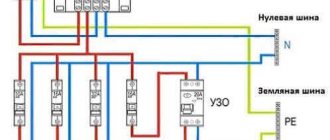Major changes for 2020
On August 4, 2021, Federal Law No. 340 came into force, according to which people who want to build houses and garden plots (dachas) no longer need to obtain permits. There are a few other changes:
- Instead of permits for the construction of an individual residential building, it is sufficient to submit a notification to the town planning department of the administration at the location of the site, or to another authorized body;
- The same applies to garden houses (dachas): they can be built without prior permission, but it is necessary to notify the government agency;
- The owner of the property submits a written notification, and in response, the government agency issues another notification reflecting information about the notification about the start and permissibility of development. The notice received is valid for 10 years, even if the owner of the land subsequently decides to sell it;
- If construction of a residential building began before August 4, 2021, the notification could be submitted until March 1 of the following year;
- If permission has already been received, you do not need to send a notification.
Notification is given not only about the beginning, but also about the completion of construction. After this, ownership is registered.
Types of objects that are subject to the notification procedure
The construction of the following types of real estate objects is subject to the notification procedure:
— Individual residential building;
- Garden house.
What are the differences between a garden house and an individual residential building, see the article at the link.
Information: The simplified procedure for registering residential or garden houses on garden plots of land ended on March 1, 2021. Therefore, now, construction on garden land is possible only after sending a notice of the planned construction.
It is not required to notify the Administration about the construction of such auxiliary buildings as a bathhouse, garage, barn.
In case the developer before 08/03/2018 If a permit for the construction of a residential building has already been received, there is no need to additionally notify the Administration about the start of construction.
Important : Construction can only be carried out on a demarcated plot of land. Therefore, before submitting a notice of planned construction, make sure that the land plot being developed is demarcated. You can check this by following the instructions in the article.
When is a building permit required?
The obligation to obtain permission is established by Art. 51 Civil Code of the Russian Federation. According to it, the document is required only in a few cases:
- Reconstruction, construction of capital construction projects;
- Reconstruction or construction of nuclear energy facilities or space infrastructure;
- Construction of hydraulic engineering facilities of the first and second classes, affecting the infrastructure or located in the territory of air, water, and other types of transport, in border areas;
- If construction is planned in a specially protected natural area, except for resorts and health-improving areas.
Thus, if the land plot is not located in a specially protected natural area (near a river bank, in a forest, etc.), or is located at a sufficient distance from the airport, there is no need to obtain a permit.
In what cases is a construction permit not required?
The construction of objects on the land site must be officially registered.
That is, on the eve of the start of construction of the structure, it is necessary to obtain permission for this. Town Planning Code of the Russian Federation in Art. 55 provides for the issuance of a permit for the commissioning of a constructed building. In Part 5 of Art. 9.5 of the Code of the Russian Federation, on administrative violations of legislation, regulates that the operation of a constructed structure without the appropriate permit leads to administrative punishment. Exceptions include cases regulated by the town planning code, when the construction, reconstruction or repair of an object is carried out without issuing a permit.
Such cases include:
- When the owner of a land plot wants to build a garage, used only for his own needs, without entrepreneurial direction. You also do not need permission to erect a structure on a summer cottage site.
- If a person provides construction or reconstruction of a structure that is not related to capital development.
- When constructing a canopy, kiosk and other mobile structures that are not classified as immovable structures.
- When a person wants to build an auxiliary structure on a piece of land, for example, the construction of a garage at the dacha.
- If the reconstruction of housing construction does not affect the acceptable reliability and safety characteristics.
- When developing or reconstructing drilling wells, if there is an approved project for the implementation of work related to the use of subsoil.
As can be seen from the list, permission for construction is not needed if the structure does not belong to a permanent building. However, the question may arise: how to determine whether a structure is a capital one? In practice, determining such a circumstance is not easy.
The Town Planning Code on this issue regulates:
- Capital construction objects include buildings, house construction, and unfinished buildings.
- The exceptions include temporary structures, kiosks, canopies and other similar structures.
The Civil Code regulates a more precise concept of real estate, which includes:
- Land areas, subsoil areas and structures firmly connected to the site.
- Structures that cannot be moved from one place to another, including premises and unfinished structures.
- Aircraft and sea vessels used within the country and subject to state registration.
- Residential and non-residential housing construction, garages, as well as buildings for cars, if their boundaries are displayed in cadastral documents of housing construction.
What is a capital construction project?
Many people find the formulation “capital construction facility” (CFU) difficult, so let’s look at the nuances of its interpretation in more detail. Any object whose construction is not completed is considered such. There are also additional factors:
- OKS is a building or structure erected on the site from the foundation to commissioning;
- After commissioning, the building is called a “capital structure”.
It is inseparable from the land plot. It cannot be dismantled and transported to another land while maintaining its original characteristics.
Conventionally, capital construction is divided into three types:
- Construction of new facilities. In this case, the foundation is laid, and the owner will be able to register ownership only after commissioning;
- Reconstruction. This implies partial dismantling, repair of the building, redevelopment, reconstruction;
- Construction of extensions, when extensions are made to the main building to expand the area. The latter are registered exclusively after commissioning.
OKS can also be industrial. Such buildings house workshops and defense structures. There are also non-production buildings - apartment and private buildings, socio-cultural and communal facilities. Separately, it is worth highlighting linear objects - engineering networks that provide the population with water supply, electricity, gas, etc.
Unfinished or reconstructed houses and cottages are considered OKS, but if they are not located in special zones, there is no need to obtain a permit.
What is individual housing construction?
Nowadays, residential buildings are being built on plots of land sold as individual housing construction (individual housing construction). It is important that the house meets the technical specifications:
- Height – no more than three floors and a maximum of 20 meters;
- Non-commercial use only. Apartments in such buildings cannot be sold.
Apartment buildings are not built on individual housing construction plots - there are lands for another purpose for this. The same applies to dachas. However, in both cases, permission is not required.
Filling out a notice of planned construction
This section will provide complete instructions for filling out a notice of planned construction.
Official form (form) of notification of planned construction
The official notification form was approved by Order of the Ministry of Construction of Russia dated September 19, 2021 No. 591/pr “On approval of notification forms required for the construction or reconstruction of an individual housing construction project or garden house.”
Text of Order No. 591/pr with all forms: Show
Form for notification of planned construction
Sample of filling out a notice of planned construction
How to submit a notification: step-by-step instructions
Having decided to start building a house on your own site, you need to proceed as follows:
- Prepare all documents, fill out the notification and submit to the urban planning department of the administration.
- Submitted documents will be reviewed within 7 days. Based on the results, the government agency will send a response notification about the compliance of the planned house with the established requirements. Or about inconsistency, but in this case construction cannot begin.
In addition to the non-compliance of the construction plan with technical requirements, the town planning authority may send a response notice of disagreement with the development if the owner submits an incomplete set of documents or incorrectly formats the notice.
You can submit a notification in several ways: in person, through the MFC or State Services. Remote submission is available if the land owner has a verified account on the portal. However, in any case, the documents will have to be provided in person at a time chosen at your discretion during the process of filling out the notification on the website.
Service agreement construction permit
If there are no objections, the Customer signs the acceptance certificate or provides reasoned objections within 5 (five) working days. 5. Responsibility of the Parties. 5.1. In case of failure to fulfill obligations or improper fulfillment of obligations under this Agreement, the Parties shall be liable in accordance with the current legislation of the Russian Federation. 6. Dispute resolution procedure and final provisions. 6.1. The parties will make every effort to resolve disputes through negotiations. 6.2. If an agreement is not reached between the Parties, all disputes related to the execution, amendment and termination of this Agreement shall be considered in the Moscow Arbitration Court in accordance with the current legislation of the Russian Federation. 6.3. This Agreement comes into force from the moment it is signed by the Parties and is valid until the Parties fully fulfill their obligations under the Agreement. 6.4.
Sample application
The form of notification is established by Order of the Ministry of Construction dated September 19, 2018 No. 591pr. To fill out you will need the following information:
- FULL NAME. applicant or name of organization;
- The name of the government agency to which the documents are sent;
- Place of residence of the developer;
- Number from the Unified State Register of Legal Entities, INN;
- Information about the site: cadastral number, address or description of location, existence of rights of other persons to it;
- Information about the OKS: purpose of notification - reconstruction or construction, number of floors, planned parameters, area, setbacks from boundaries;
- Development scheme.
At the end, the applicant signs and indicates the list of documents submitted.
Price
The service is provided free of charge. The only costs that you will have to face are the preparation of a technical plan, obtaining an extract from the Unified State Register and other documents.
Agreement for the provision of technical customer services (in construction)
Agreement for the provision of technical customer services
[enter as required] [date, month, year]
[name of the enterprise, organization], represented by [manager's position, full name], acting on the basis of [enter as necessary], hereinafter referred to as “Customer”, on the one hand, and [name of the enterprise, organization], represented by [ position of manager, full name], acting on the basis of [fill in as necessary], hereinafter referred to as the “Contractor”, together referred to as the Parties, have entered into this agreement as follows:
1. The Subject of the Agreement
1.1. Under this agreement, the Contractor, in order to control and supervise the progress of construction, the quality of materials used in construction by the contractor until the completion of work, compliance with the deadlines for completing work under the contract, and the reliability of estimate documentation, undertakes to provide the full range of functions of the Technical Customer in the construction [fill in as appropriate], located at address: [enter as necessary], from the moment of preparation of the project until the delivery of the facility, and the Customer assumes the obligation to pay for the services provided under the terms of this agreement.
2. Rights and Obligations of the parties
2.1. The customer undertakes:
— provide the Contractor with the terms of reference, project, as well as all permits available to the Customer, required in accordance with current legislation to carry out the work specified in the terms of reference and project at the site, within [value];
— provide assistance to the Contractor in fulfilling its obligations under the contract;
— timely and in full pay for the services provided by the Contractor according to the issued invoices.
2.2. The customer has the right:
— make proposals for improving methods for performing the functions of a Technical Customer by the Contractor;
— to receive reliable information through the Contractor’s reports;
- to receive advice on issues related to the subject of the contract.
2.3. The performer is obliged:
— properly perform the functions of the Technical Customer assigned to him;
— control the process of construction work;
— develop a Work Implementation Plan, a work schedule;
— obtain all design estimates and permitting documentation;
— conclude agreements with licensed general contractors to perform work in accordance with design and estimate documentation;
— ensure registration of documents on the land plot;
— appoint a person responsible for the construction site;
— organize obtaining permission from the relevant authorities for the use of existing communications during construction;
— keep records of target funds;
— carry out technical supervision over the construction of the facility;
— guarantee that technical supervision is carried out by certified specialists, independent experts in their field;
— carry out quality control of work in accordance with the requirements of technical standards, rules, etc.;
— organize a constant check of the availability of documents confirming the quality of materials and products used in the production of work;
- identify all inconsistencies and problems;
— make proposals for their elimination;
— establish control over the timely elimination of deficiencies in the work;
— do not allow unreasonable excess of the estimate documentation;
— reflect the results of the ongoing technical supervision in [enter as necessary], indicating all detected violations of technical conditions, the perpetrators, and requirements aimed at eliminating them;
— interact with local government bodies, control and supervisory organizations on issues related to the performance of work under this agreement;
— interact with local authorities;
— guarantee compliance with the economic interests of the Customer;
— monitor compliance with construction deadlines;
— carry out the final stage of monitoring the work performed before handing over the facility to the Customer;
— advise the Customer on all issues related to this agreement;
— perform all work at a high professional level;
— guarantee the quality of the functions performed by the Technical Customer.
2.4. The performer has the right:
— make proposals for improving methods for performing the functions of a Technical Customer.
3. Cost of services and payment procedure
3.1. The cost of services stipulated by this agreement is determined by an additional agreement - a price agreement protocol drawn up [indicate the frequency of preparation], which determines the list of services provided during the reporting period, indicating their cost.
3.2. Payment for services is made [fill in as required] according to the issued invoices.
4. Responsibility of the Parties
4.1. For non-fulfillment or improper fulfillment of obligations under the contract for the provision of services of the Technical Customer in construction [enter as necessary] the Customer and the Contractor shall be liable to the extent of direct actual damage caused by non-fulfillment or improper fulfillment of their obligations under the contract.
4.2. For failure to complete the work within the time period stipulated by the contract, the Contractor shall pay the Customer a penalty in the amount of [value].
4.3. If the Customer violates the terms of payment for services provided under the contract, he pays the Contractor a penalty in the amount of [value]% of the amount payable for each day of delay in payment.
4.4. Technical Customer:
- manages the allocated monetary and material resources for the construction of the facility and bears material and other responsibility provided for by current legislation;
— bears responsibility for the targeted and timely use of resources, compliance with building codes and regulations during the design and construction of the facility, for the quality of the design decisions made, materials, structures, equipment and construction and installation work, and the timing of the facility’s commissioning.
4.5. The parties are not liable if the failure to fulfill or improper fulfillment of obligations under this agreement was caused by force majeure circumstances: military actions, declaration of a state of emergency, natural disaster of significant destructive force, etc.
4.6. The occurrence of force majeure circumstances entails an increase in the deadlines for the Parties to fulfill their obligations under the contract for a period of time equal to the period of time during which the force majeure circumstances were in effect.
5. Dispute resolution procedure
5.1. The parties will take all measures to resolve emerging disputes and disagreements through negotiations.
5.2. If mutual understanding is not reached, the dispute is referred to the arbitration court in accordance with the current jurisdiction.
6. Duration of the contract
6.1. This agreement is valid from [day, month, year] until the Parties fully fulfill the obligations assumed under the agreement.
7.1. By agreement of the Parties to this agreement, the Contractor may accept additional types of services for performance.
7.2. Changes and additions to the agreement are made in writing and signed by the Parties.
7.3. All additional agreements are attached to this agreement and are an integral part of it.
7.4. This agreement has been drawn up in two authentic copies, one for each Party, having equal legal force.
7.5. On issues not reflected in the agreement, the Parties are guided by current legislation.
Source
Responsibility for lack of notification during construction
If the owner of the site does not notify the city planning authority about the start of development, the house will eventually be considered an illegal building. It can only be legitimized in court. If this is not done, you will have to pay fines for construction without prior approval:
- If land ownership has not been registered - up to 1.5% of the cadastral value of the site;
- If there is no permission or notification - up to 5,000 rubles;
- If the regulations and initially stated characteristics are not followed – up to 2,000 rubles.
The biggest punishment for the owner is the demolition of the unauthorized building by court decision. He will have to demolish the house himself. In addition, he will be required to pay all legal costs. If he refuses to demolish the building, this will be done by an authorized organization by order of the administration and a court decision. The owner will also have to pay the costs.
What should I do if the site is located in an area where construction requires a permit?
If the site is located near an airfield or in a specially protected natural area, and you want to build a private house on it, you will have to obtain permission. To do this, you need to prepare a list of documents and contact the administration on whose territory the land is located. The application will be considered for 7 days, and as a result, the citizen will be issued a permit and an urban development plan, which will indicate the address, size and area of the site, as well as legal requirements that must be observed during the development process.
Are documents needed for permission?
When applying for a permit, the following must be submitted along with the application:
- Extract from the Unified State Register of Real Estate. It can be ordered through the MFC, State Services or directly from Rosreestr. It indicates the category and ownership of the land. The cost of the document is 200 rubles;
- Conclusion of engineering-geological examination. It is not necessary, but it is advisable, especially if construction is carried out in a swampy area. This will prevent large subsidence of the foundation and cracks upon completion of construction. The examination is carried out by accredited companies, the cost depends solely on them. On average it is 50-70,000 rubles;
- Cadastral extract and address. An address is assigned to each site through the administration. An extract can be obtained from the MFC;
- House project. It reflects a detailed floor plan of the premises. It is designed by architectural companies and will cost 20-40,000 rubles;
- A situational plan reflecting the entire site and the house being built on it. It indicates the distance from housing to outbuildings and between neighboring houses, the layout of communication networks and other parameters.
If the owner suspects that his land is located in a protected or airfield zone, it is recommended to clarify this issue with the land committee. The received permit must be kept at least until the completion of construction - it will be needed in the future when putting the building into operation and registering ownership.
In total, it takes about 3-4 months to receive all the documents to obtain a permit. This time must be taken into account in order to meet your own deadlines for housing construction.









